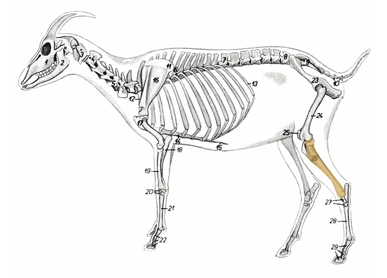

Ignorance of this or any portion of the trigeminal nerve will lead to diagnostic and therapeutic failures. Although much of this division's influence is dedicated to structures within the orbit, nose, and cranium, still, the ophthalmic division may be afflicted with a lesion or structural disorder which can cause all sorts of orofacial pain. At first glance, one might not expect one interested in the diagnosis and treatment of orofacial pain and temporomandibular joint disorders to have a need to be concerned with the ophthalmic division.
Running sheep anatomy skin#
It supplies sensory branches to the ciliary body, the cornea, and the iris to the lacrimal gland and conjunctiva to portions of the mucous membrane of the nasal cavity, sphenoidal sinus, and frontal sinus to the skin of the eyebrow, eyelids, forehead, and nose and to the tentorium cerebelli, dura mater, and the posterior area of the falx cerebri. The ophthalmic, or first division (V1) of the trigeminal nerve, is the smallest of the three divisions and is purely sensory or afferent in function. The mandibular foramen was in the middle of the medial surface of the ramus of mandible.

The condyliod process was large and its dorsal surface contained the extensive articular surfaces, which were convex. The coronoid process was almost straight with caudal end slightly pointed. The vertical ramus of mandible was thin and convex caudally and the angles were not pronounced, while the rostral border was thick and wide. The intermandibular space was “V” shaped. The body of mandible was long, narrow and concave dorsomedially. The nasal bones were notched rostromedially and nasal apertures were oval in outline. The pre maxilla had a dorsomedially concave and narrow pointed body. There was no maxillary tuberosity and facial crest. The supraorbital foramen was in the form of a deep fissure, at the rostrolateral margin of the orbit. The mastoid foramen was very large and situated in a deep fossa in the occipital bone in contrast to ox, where it lay at the junction of occipital and temporal bones.

A rough transverse ridge separated the parietal and nuchal surfaces. It joined the parietal bone at transverse suture. The occipital bone formed the entire nuchal surface and encroached upon the dorsal surface about 1.75 to 2 inches. It was widest in the frontal region and contained the orbits laterally. The skull of camel when viewed from above was irregularly pentagonal in outline.


 0 kommentar(er)
0 kommentar(er)
